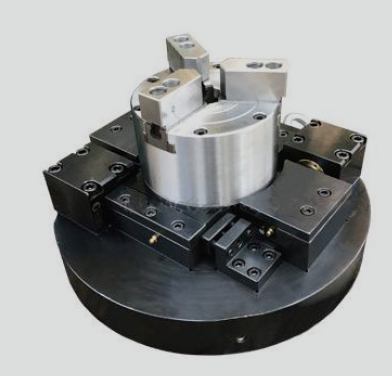Oct. 30, 2024
The field of CNC machine tool processing is no stranger to fixtures. CNC machine tool processing requires fixtures to assist in stability,
ensure the accuracy of the workpiece, reduce the labor intensity of workers, and improve production efficiency.
There are many types of fixtures, and different fixtures are used to process different workpieces.
The following editor will introduce the specific functions of fixtures and the commonly used fixtures.

1. What are the functions of fixtures?
1. Can stably guarantee the machining accuracy of the workpiece: When the workpiece is clamped with a fixture,
the position accuracy of the workpiece relative to the tool and machine tool is guaranteed by the fixture.
It is not affected by the technical level of workers, so that the processing accuracy of a batch of workpieces tends to be consistent.
2. It can reduce auxiliary working hours and improve labor productivity: the workpiece is clamped with a fixture,
and the workpiece can be quickly positioned and clamped without alignment. Auxiliary working hours are significantly reduced;
clamping the workpiece with a fixture increases the rigidity of the workpiece, so the cutting amount can be increased. Multi-piece,
multi-station fixtures can be used to clamp workpieces, and efficient clamping mechanisms are used. These factors are conducive to improving labor productivity.
3. It can expand the use range of machine tools and realize one machine with multiple functions:
The use of special fixtures can change the purpose of the original machine tool and expand the use range of the machine tool,
realizing one machine with multiple functions. For example, after installing a boring die fixture on a lathe or radial drilling machine,
the box hole system can be bored; the lathe can also be converted into a broaching machine through a special fixture to give full play to the role of a general-purpose machine tool.
4. Reduce workers’ labor intensity: It is convenient and fast to clamp workpieces with clamps.
When pneumatic, hydraulic and other clamping devices are used, workers’ labor intensity can be reduced.
2. Introduction to commonly used fixture types
1. The universal combination fixture is suitable for milling medium and small workpieces on CNC milling machines during small batch production or development.
2. Special milling fixtures are fixtures specially designed and manufactured for a certain or several similar workpieces.
It is generally used when it is absolutely necessary during mass production or development.
3. The multi-station fixture can clamp multiple workpieces at the same time, which can reduce the number of tool changes and facilitate one-sided processing.
Loading and unloading workpieces on one side helps shorten preparation time. Improves productivity and is more suitable for medium-volume production.
4. Pneumatic or hydraulic clamps are suitable for producing large batches of workpieces that are particularly labor-intensive and labor-intensive to use other clamps.
It can reduce workers' labor intensity and improve productivity, but the structure of this type of fixture is complex. The cost is often higher and the manufacturing cycle is longer.
5. Vacuum clamps are suitable for workpieces with large positioning planes or large sealable areas.
Some CNC milling machines (such as wall panel milling machines) have their own universal vacuum platform.
When installing workpieces, they process regular rectangular blanks.
Special rubber strips with hollow or solid circular sections with certain size requirements can be directly used and embedded into the sealing groove of the clamp.
Then place the blank and start the vacuum pump to clamp the blank.